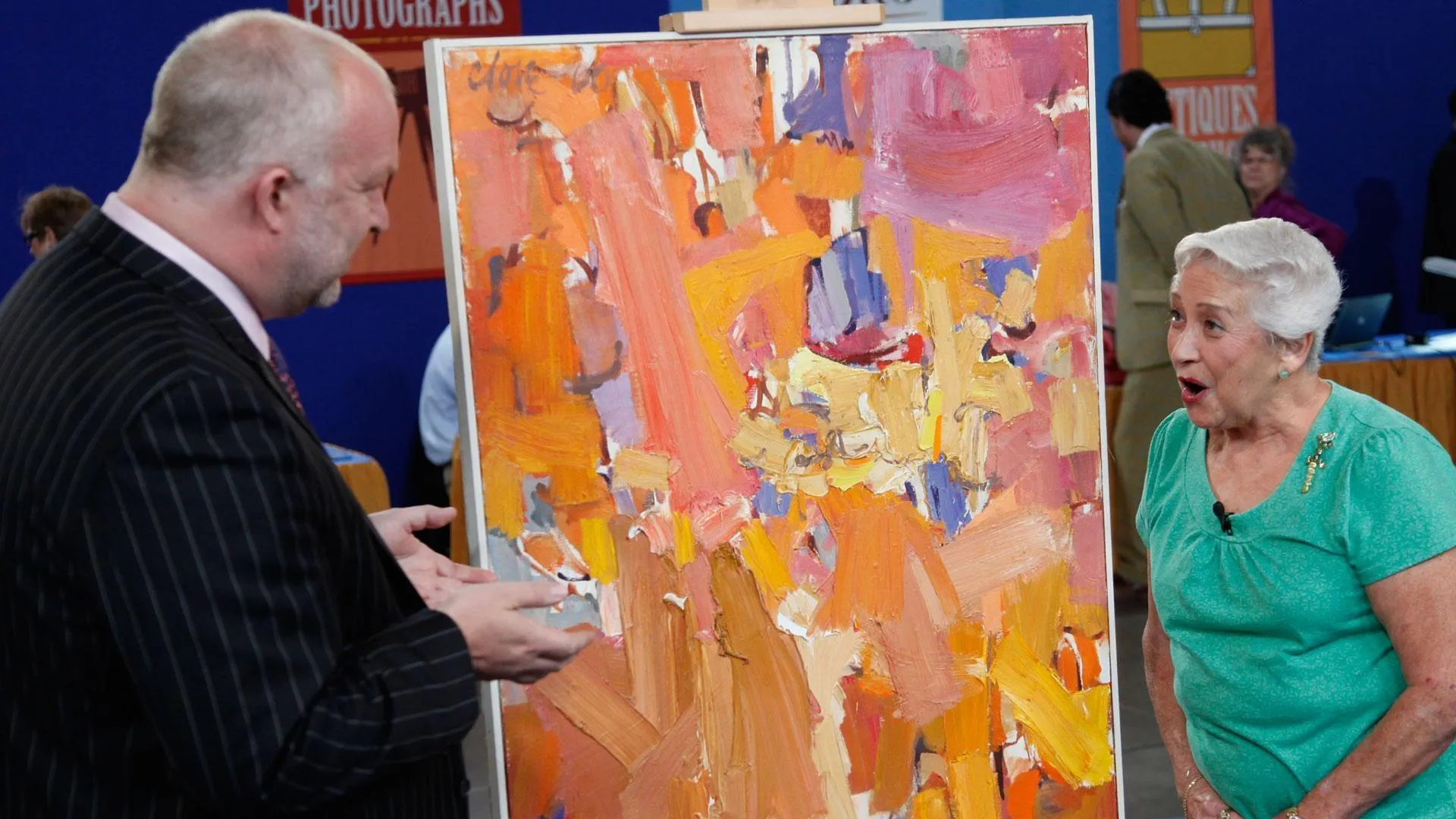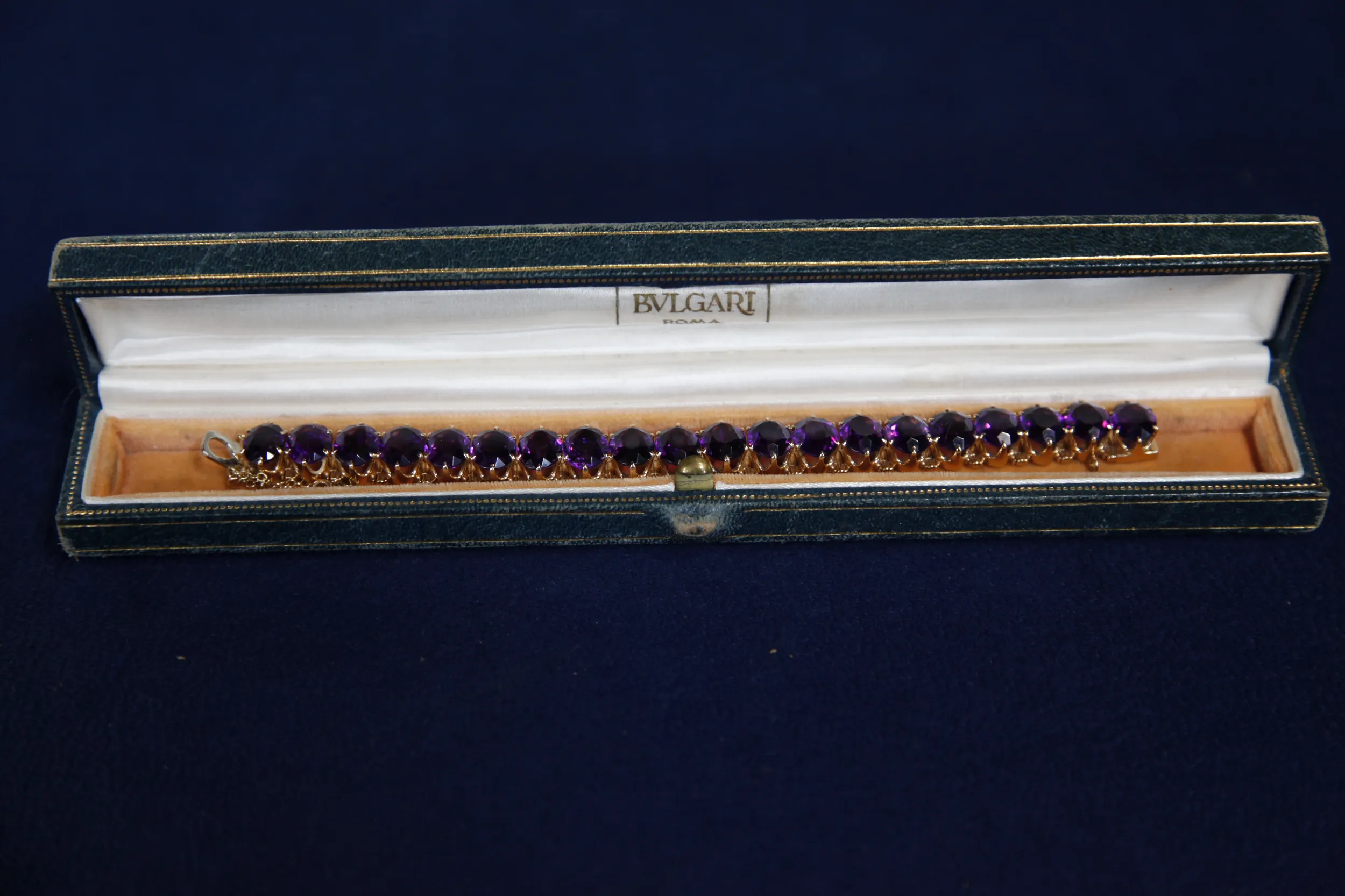GUEST: They all belonged to my mother, and she passed away in 1997, but I've had them and have known them even before then.
APPRAISER: Well, she liked purple.
GUEST: Mm-hmm.
APPRAISER: And one of the most popular purple stones in jewelry is amethyst, and that's what she collected.
GUEST: Well, and we're also both February birthdays, which is the birth... gemstone.
APPRAISER: I'm going to start with the piece closest to you, which is a pendant. It's on a gold chain with a gold setting, and it's a pear-shaped amethyst. Amethyst is purple quartz. And quartz is a stone that can be clear, white and colorless. It can be yellow-- then it's citrine. Or it could be purple, and then it's amethyst. But generally these stones are produced in great quantities in mines in South America, and they're inexpensive. This I chose as the first one because it's the palest color. And amethyst that is not a deep, dark color does not command as high a price as the more saturated, deep purple amethyst. So a pendant like this is only worth about $300, even though it's in a gold setting. The next set are her pear-shaped earrings. She might have worn these with the pendant, but again, they're not terribly saturated in color. They're kind of on the pale side. And a pair of earrings like this, again, I would say about $300 for the pair in the gold settings.
GUEST: Mm-hmm.
APPRAISER: Suddenly we move up in quality to her ring, and this one has very dark, deep, saturated purple and diamonds around it, which, of course, add to the value. It's a lovely ring. If it was any darker, it would be too dark. A ring like this with diamonds around it, in 14-karat gold, now we're at about $2,000. That's a big jump from $300. The circle pin has a collection of these oval amethysts that are cabochon. They're not that faceted, they're more polished round. The color is lovely, and they match from each stone to the other. A pin like this, about $1,200 to $1,500.
GUEST: Really?
APPRAISER: This one, it's in a box from Bulgari, and there's a second lesson here, which is don't always believe what the boxes say. We examined the bracelet. The Bulgari mark is not there.
GUEST: Really?
APPRAISER: And the gold is 14-karat. Bulgari only worked in 18-karat, even during wartime. But it's still a very special bracelet. And it's special because of the color and saturation of these amethysts. These are Siberian amethysts.
GUEST: Really? Oh, my goodness.
APPRAISER: All of your other amethysts, your mother's collection, came from South America. We never see Siberian amethyst except in old pieces. It has a violet, purplish-blue color that you don't see in any other amethyst from anywhere else in the world except from those mines in Russia. There's no diamonds or anything else to enhance the value, just the stones alone. At retail in a fine jewelry store, this is a rarity. It would bring $10,000 to $12,000, and the person that knows amethysts will know if they don't buy it now, they may never see another one.
GUEST: My goodness. Oh! I thank you so much.
APPRAISER: My pleasure.
APPRAISER: It's much more than I would have realized. (laughs)












